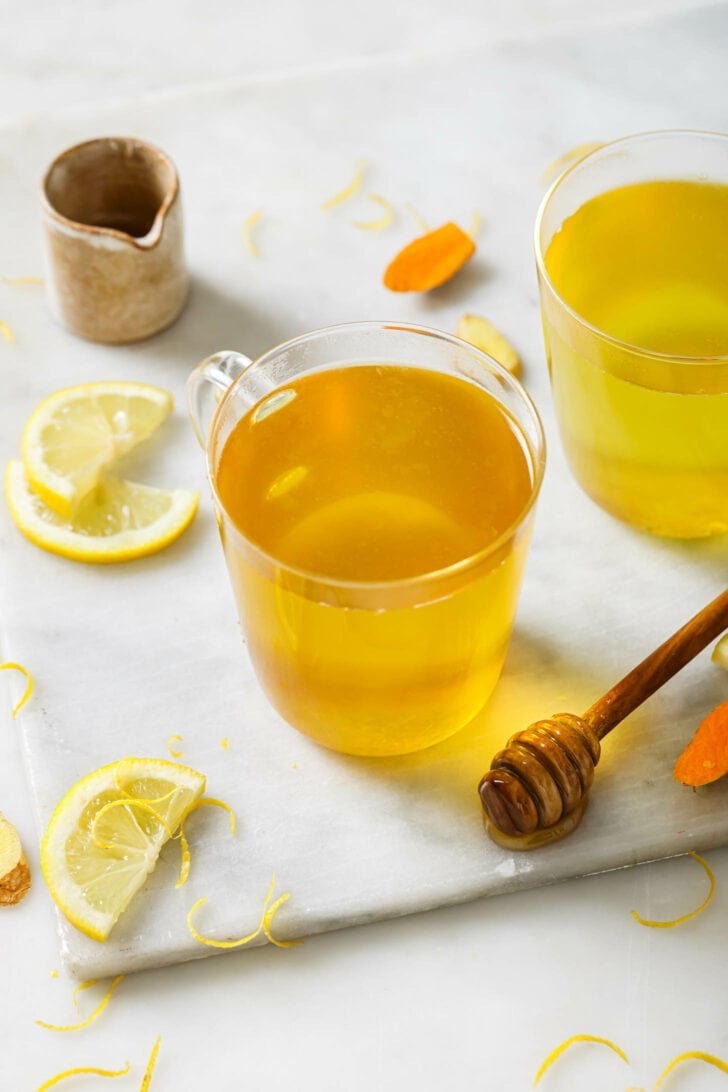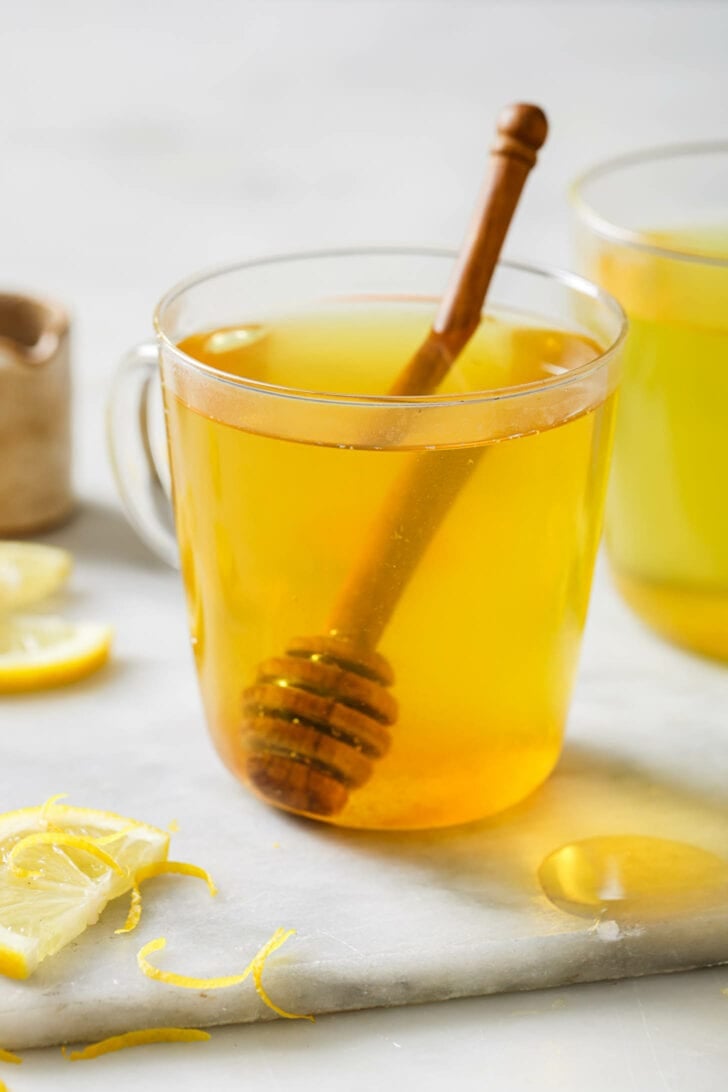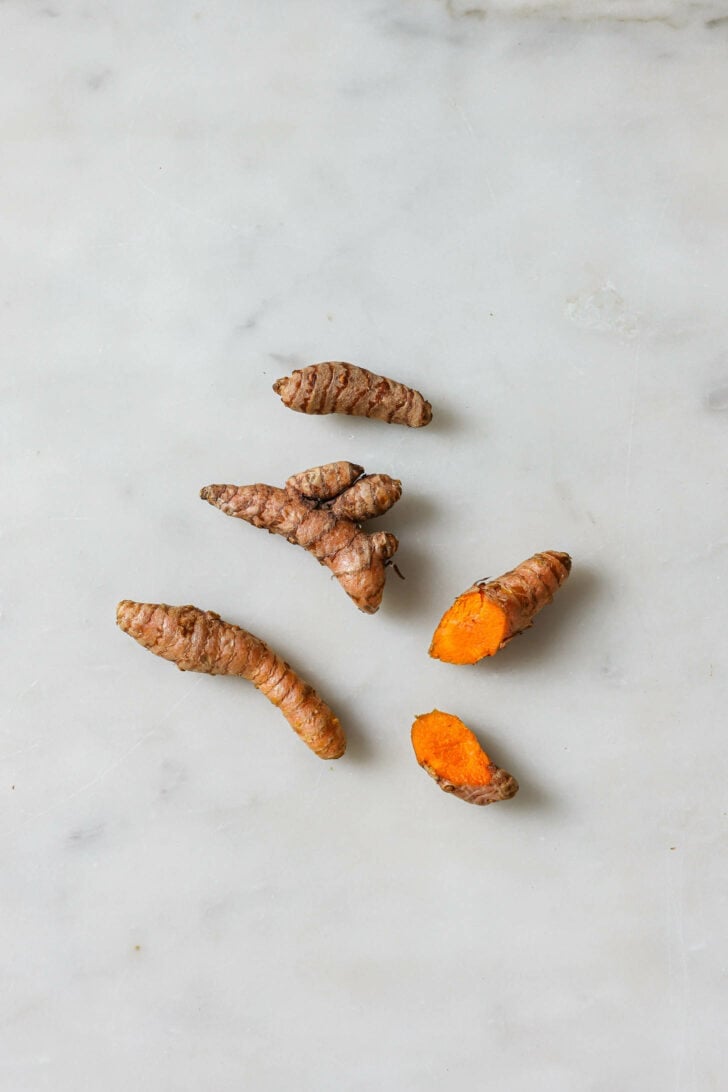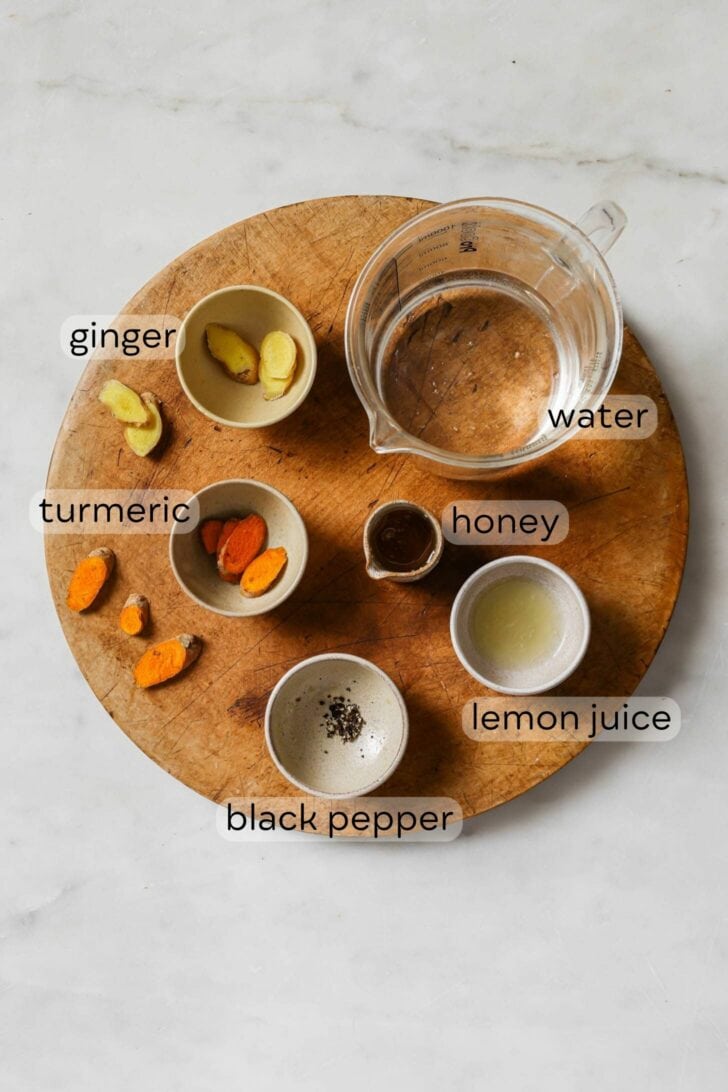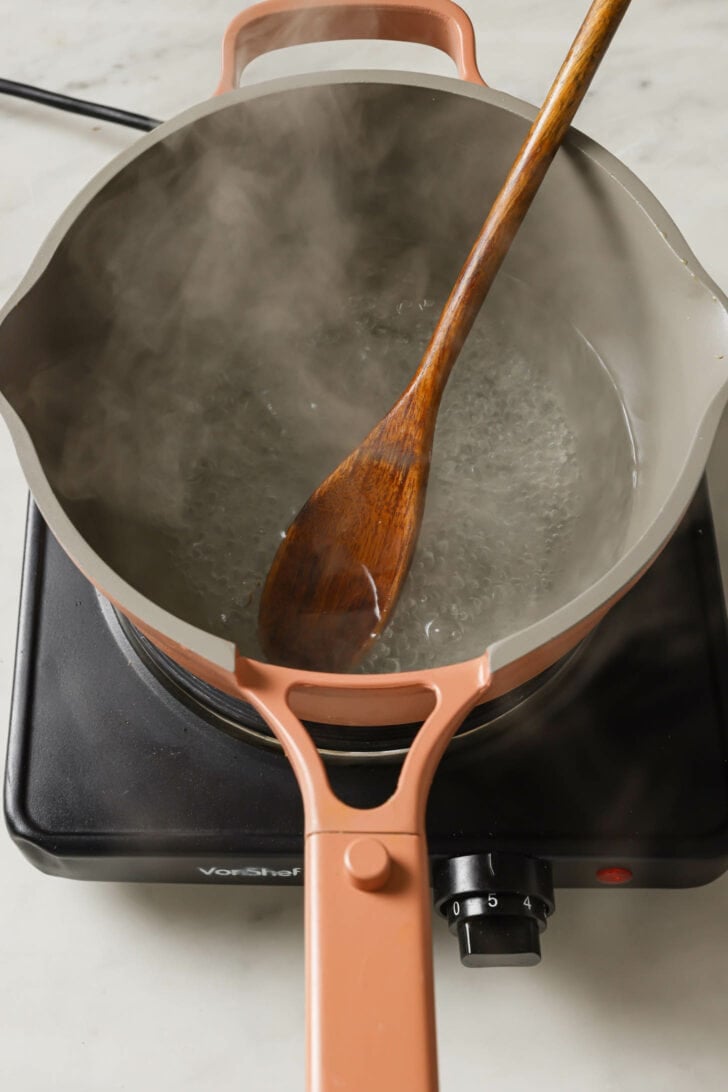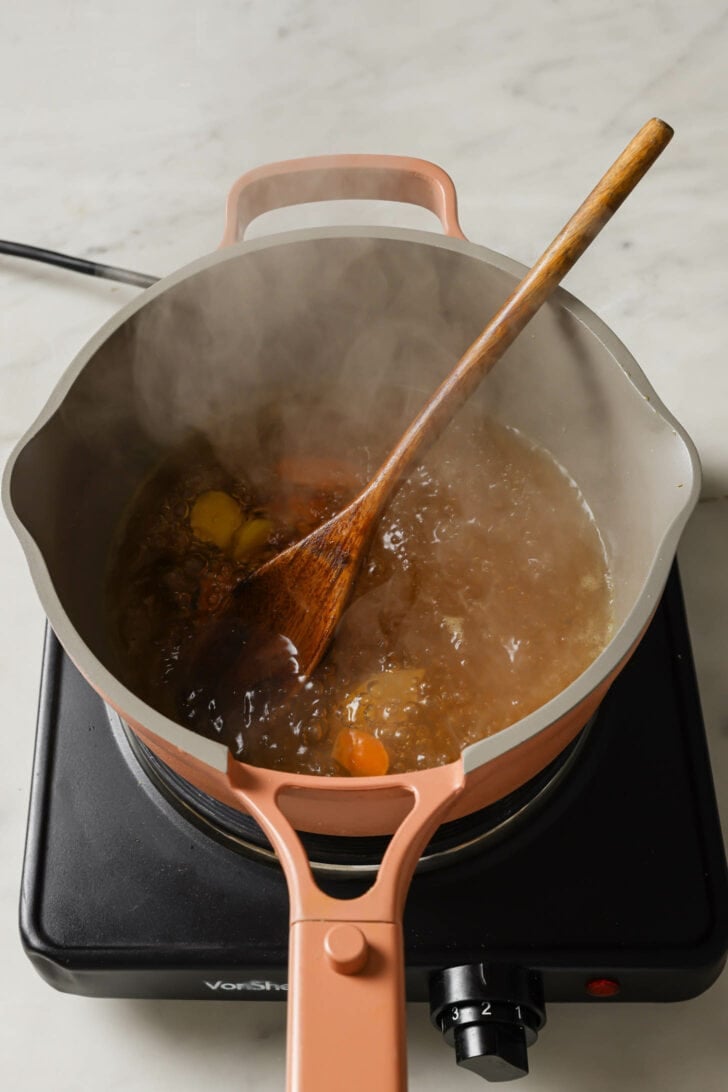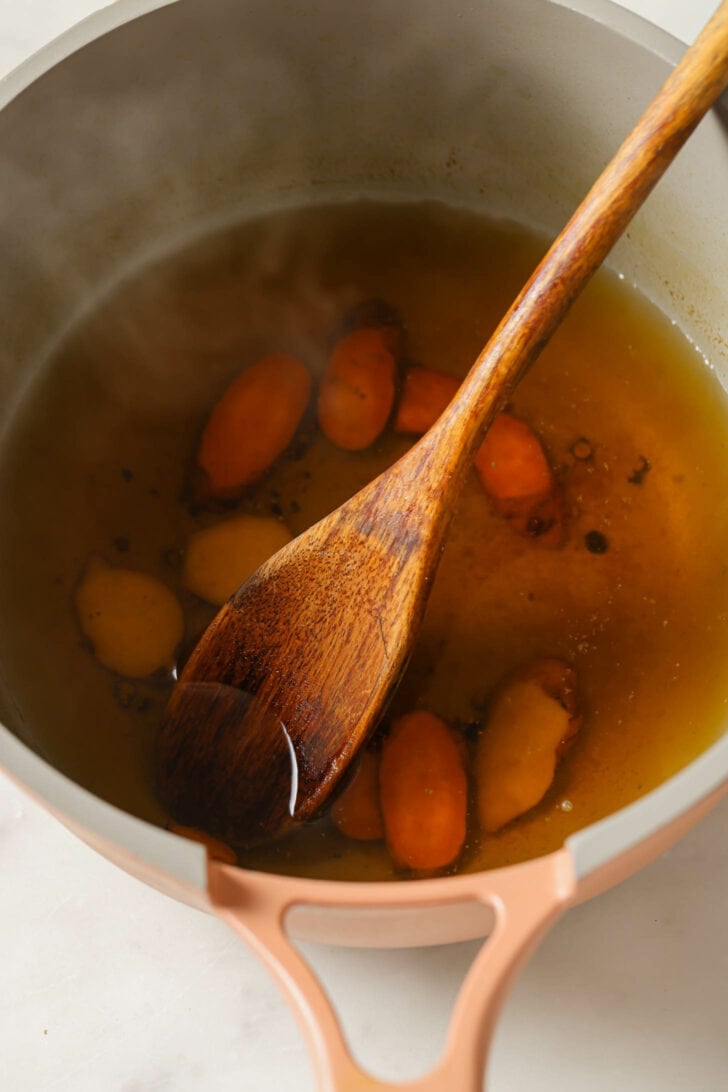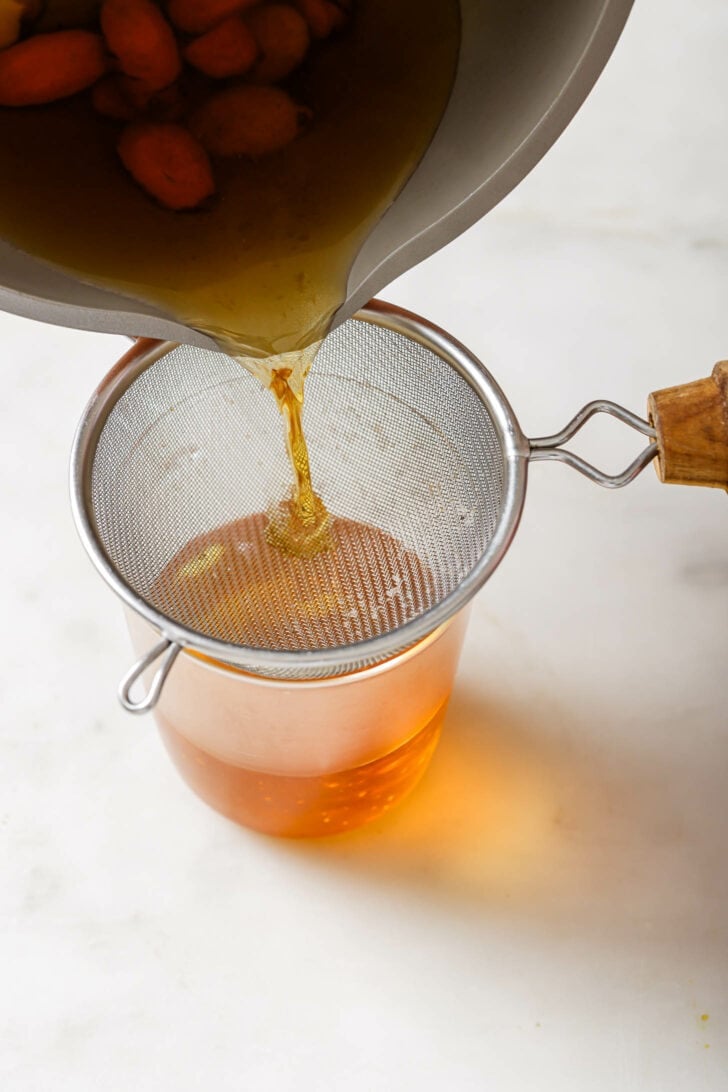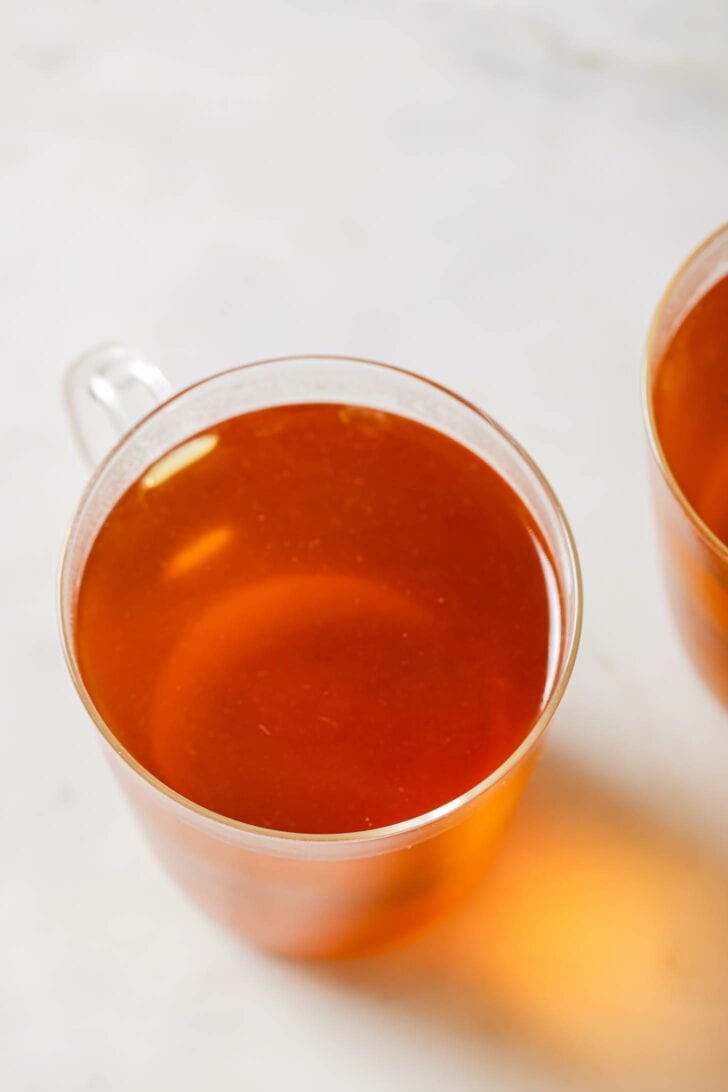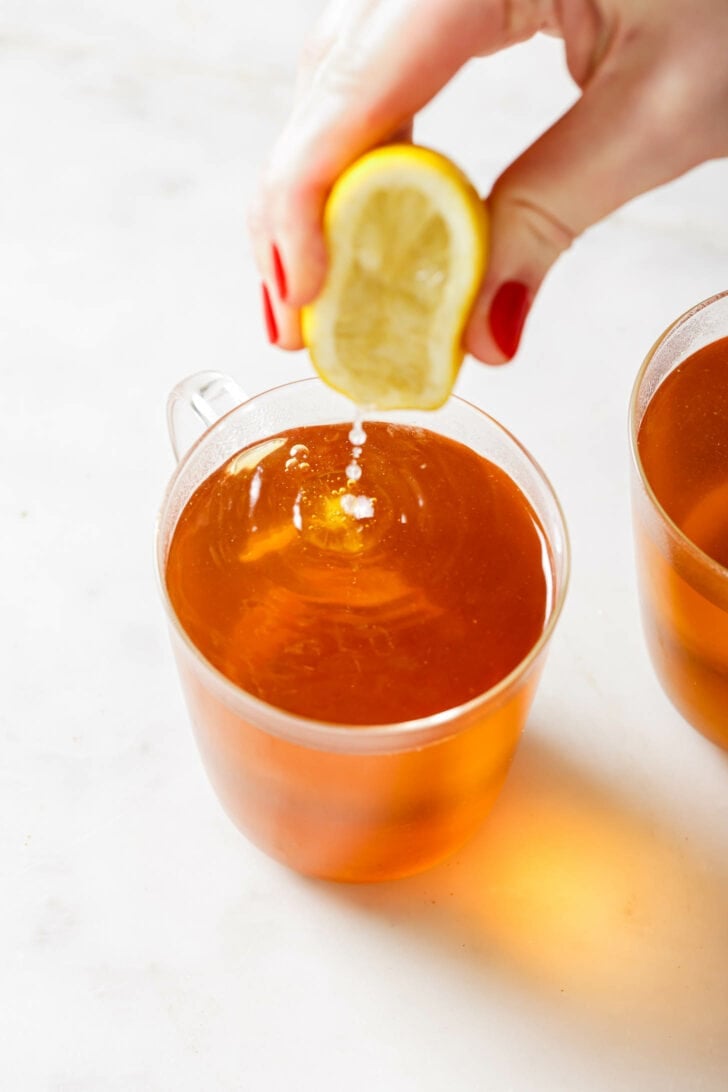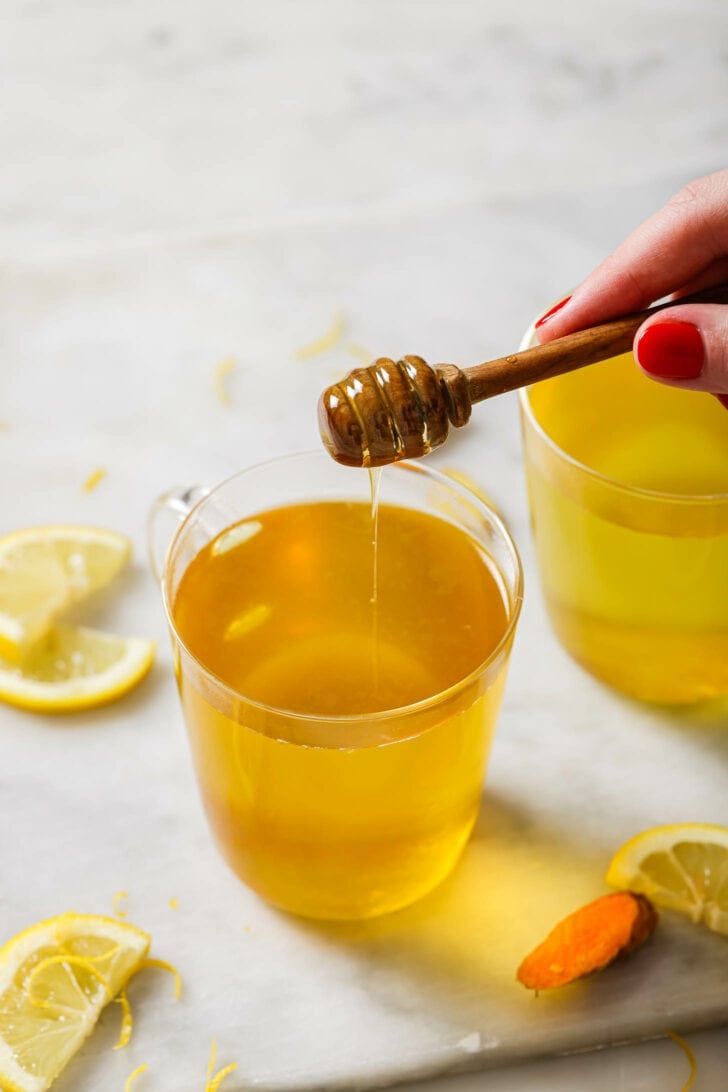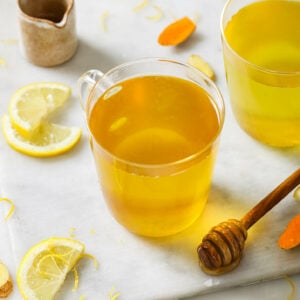Turmeric Tea
This Turmeric Tea recipe has everything you need and nothing you don’t. This recipe: Enter your email below and get it sent straight to your inbox. Plus, get recipes & tips every week!
Requires no peeling or grating of the turmeric and ginger. You’re just thinly slicing to extract their flavor with minimal work. Is balanced in taste. No weak flavors, but not overpowering or unpalatable. Is optimized for absorption with a touch of black pepper. Includes on-the-go options, no stovetop required. So you can make a concentrate or steep in your cup!
Turmeric has been a constant in my life. As a teenager, I’d see my grandparents stir it into their daily morning concoction. When I started to cook, I realized how essential it is for transforming pale curries into something vibrant and appetizing. Try making Zucchini Curry without turmeric, and you’ll know what I mean. And now, turmeric in some form is standard protocol when anyone in the house is sick. Turmeric Tea is Turmeric Milk‘s lighter, more westernized counterpart. (As far as I know, water-based Turmeric Tea is not as popular in India or Pakistan.) After trying a couple of tea bags, I discovered that turmeric in tea form can be soothing, nourishing, and even tasty. So I recreated those tea bag flavors, but with bright, fresh ingredients. You’ll taste the difference immediately.
Ingredients + Preparation
Turmeric
Turmeric is an ancient Indian plant that belongs to the ginger family. To make turmeric powder, farmers clean, boil, dry, and grind turmeric rhizome (this Youtube video shows the process).
Using Root vs Powder
Interestingly, save for the occasional Turmeric Achar (pickle), you’ll rarely find turmeric root used in Desi cooking. Instead, people use ground turmeric in almost everything – curries, snacks, breads, and drinks. Traditional turmeric tea recipes usually pair turmeric powder with milk, not water. Perhaps this is because curcumin (turmeric’s active compound) is fat-soluble and better absorbed with milk, or because turmeric powder is just more palatable with milk. (Notice that as much as we use it, you can hardly taste turmeric in curries.) Since this is a water-based tea, I prefer to make it with turmeric root. It gives cleaner, more vibrant flavor compared to turmeric powder. That said, turmeric powder works just as well. The key is to use a small amount, 1/8 teaspoon at most. Remember, though turmeric is well tolerated, more is not necessarily better. Using too much will make it taste medicinal and murky. Where to find: Turmeric root is increasingly easier to find. I see it often at my local grocery store, and I know Whole Foods usually carries it.
Other Ingredients
Water: Like my Masala Chai and Turmeric Milk, this recipe accounts for evaporation. You’re starting with 2 cups so that you can end up with around 1 1/2 cups/12 oz (about the size of most large mugs). Fresh ginger root: Ginger can be overpowering compared to turmeric. As a general guideline, I’d suggest using twice as much turmeric as ginger.
Note on slicing the turmeric and ginger: The reason I thinly slice is because grating them by hand is tedious (I don’t even grate ginger for curries). You can also lightly crush them both with a mortar & pestle which also works just as well, with a little more debris.
Freshly ground black pepper: Piperine (the compound in black pepper that enhances turmeric absorption) makes black pepper an essential ingredient if you’re aiming to get the most health benefits. Just a small amount is enough. I like to use my pepper grinder, as pre-ground black pepper may have lost its beneficial properties. Freshly squeezed lemon juice: Helps cut the natural bitterness of the ginger and turmeric. Honey (optional): Unlike Turmeric Milk, Turmeric Tea doesn’t really beg for a sweetner. If it’s your first time trying it, honey makes it more appealing.
How to make Turmeric Tea
Here’s the simple step-by-step:
Flavoring Options/Variations
Since the ginger and turmeric is already quite pungent, I don’t feel the need to use whole spices like I would for Turmeric Milk or Masala Chai.
Cinnamon: I have tried and love adding a cinnamon stick, which adds flavor and natural sweetness to the drink. Use no more than 1/2-inch broken piece of cinnamon as it can get overpowering. Spices: For a spiced version, add a green cardamom and clove along with the cinnamon. Orange blend: Lipton, Yogi, Trader Joe’s, and Rishi all use orange peel or or oil, which I think would be a lovely complementary citrus flavor. Add fat: As I mentioned earlier, because both piperine and curcumin are fat-soluble, turmeric absorbs better with a fat. I don’t add fat to this recipe simply because it doesn’t feel natural or appetizing to me. If you want to try it, feel free to add 1/8 teaspoon of a healthy fat such as coconut oil or ghee.
Tried this recipe? If you have a minute, please consider leaving a comment telling me how it was! You can also take a quick picture and upload it directly into the comments. If you’re on Instagram, please tag me so I can see your creations. I truly love hearing from you. Thank you!
